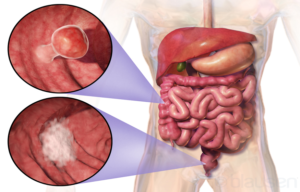Brushing your teeth is essential for maintaining good oral hygiene. Brushing should last at least two minutes and be repeated at least twice a day, and ideally after each meal. In order to preserve the gums and the enamel of the teeth, it is also advisable to use a fluoride toothpaste without adding water as well as a toothbrush with soft bristles which it is recommended to change regularly at most every three month. Once placed in front of your bathroom mirror so as to control the brushing technique, all you have to do is follow the 5 steps that constitute effective tooth brushing and always clean them in the same order, so as not to forget any.
Brushing the outer surface of the teeth
To begin, the toothbrush is placed at the junction between the teeth and the gums, and tilted so that it forms a forty-five degree angle with the teeth. With the brush, we then make a circular movement while maintaining constant pressure, starting from the gum to go towards the tooth, and only in this direction, then we repeat this gesture two or three times for each group of two teeth. This technique massages the gums and removes dental plaque and food residue. This is also how we clean the entire outer surface of the teeth of the upper jaw, from the incisors to the last molars. Once the teeth in the upper jaw have been brushed, those in the lower jaw should be cleaned in the same way, but this time brushing from the bottom up.
Brushing the inside of the teeth
Using the same technique as for the external face, brush the internal face of the teeth, palate side for the top, and tongue side for the bottom. In order to clean the upper and lower incisors more easily, the brush must be positioned vertically and the movement must go from back to front and from inside to outside.
Brushing the chewing surfaces
Position the brush vertically and brush the chewing surfaces, also called occlusal surfaces, with small circular movements back and forth and a rotational movement on the last tooth. This gesture must be repeated at least ten times per side, on the upper teeth as on the lower teeth.
Passing an inter dental brush or dental floss
A final visual check makes it possible to detect the areas where dental plaque deposits persist and to proceed with the finishing touches. And as the bristles of the toothbrush do not allow to remove the food residue lodged between the teeth and has dental plaque, it is advisable to carry out a cleaning of the inter dental spaces using inter dental brushes or dental floss.
Palate and tongue brushing
Since the palate and tongue also carry germs, it is also imperative to clean them for about a minute after brushing your teeth. For this, it is possible to use the bristles of the toothbrush or a special brush and then rinse your mouth well, either with water or with the help of a dental solution. This gesture contributes to eliminate food residues and bacteria, but also to fight against bad breath, and to reinforce protection against cavities and periodontal diseases.
It is recommended to brush your teeth at least twice a day to maintain good dental hygiene. Effective tooth brushing helps remove plaque, clean the inter dental spaces and prevent the appearance of dental caries.



